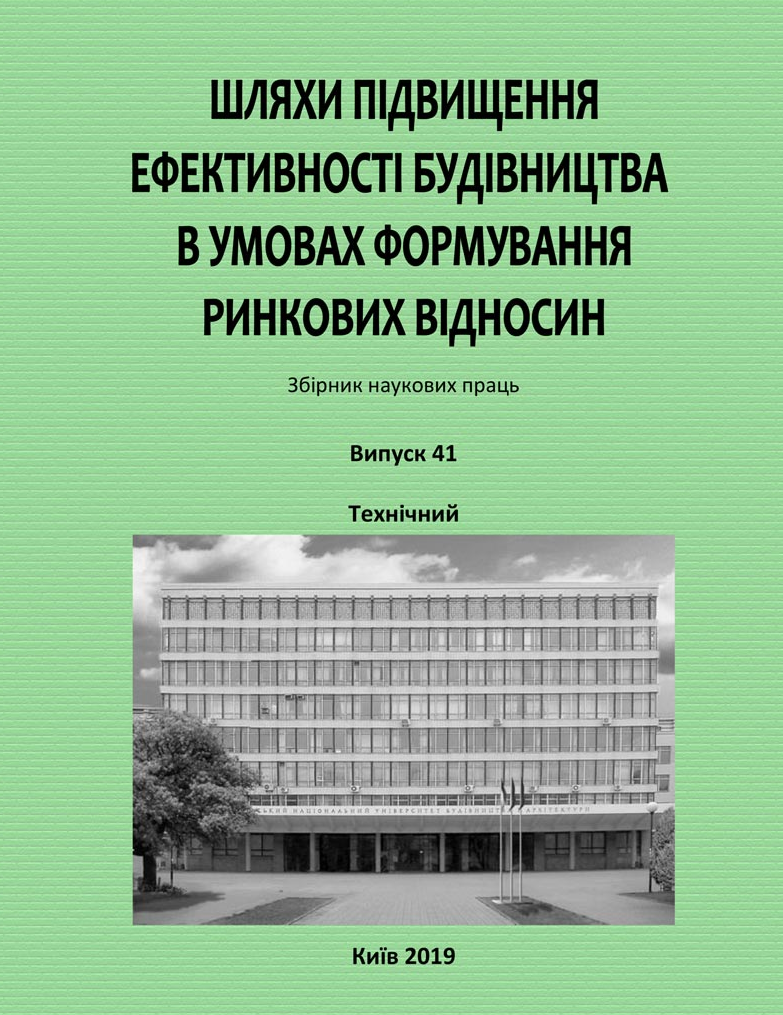Thermal modernization of the housing stock of Ukraine
DOI:
https://doi.org/10.32347/2707-501x.2019.41.81-88Keywords:
thermal modernization, energy efficiency, walls, windows, floors, roofs, housing and communal services of UkraineAbstract
Coverage of the necessity of thermo-modernization of the housing stock of Ukraine, analysis of the housing and communal fund, general ways of realization of thermo-modernization and terms of its payback in Ukraine. It is revealed that about 30% of the available housing stock in Ukraine needs major or current repairs. 36,000 homes are in the old category. Most of the heat in Ukraine is spent on heating and hot water
Thermal modernization of buildings in the context of external enclosure structures should be aimed at: exterior walls, roofs, windows, floors. Multilayer walls should be designed so that the vapor permeability of the layers increases from the inner surface of the wall to the outer one. Arrangement of internal thermal insulation is not effective, because moisture will be collected in the insulation. Particular attention should be paid to cold bridges: corners of buildings, concrete jumpers, joints of structures, unheated plinth or foundation.
Thermotechnical indicators of thermal modernization of the walls of existing buildings have been determined, the thermal protective properties of the windows are proposed to use two-layer insulation to obtain the required parameters of roofs. It has been determined that according to DBN "Thermal Insulation of Buildings" the floor heat transfer resistance should be not less than 3,75 м2*К/Вт. This means that the minimum thickness of the insulation in the floor construction must be at least 150 mm. According to the requirements of DBN "Thermal insulation of buildings" the resistance of heat transfer of a roof in a dwelling house should be not less than 5,5 м2*К/Вт, which means that the thickness of the insulation should be not less than 200-250 mm. According to DBN "Thermal insulation of buildings" the heat transfer resistance of the outer enclosure in a dwelling should be not less than 3,3м2*К/Вт, and for windows – 0,75 м2*К/Вт.
Integrated home insulation greatly improves the comfort of the premises and reduces the cost of housing. Due to the mass introduction of energy-saving technologies into the reconstruction of old buildings in Ukraine, the annual consumption of fuel and energy resources in buildings can be reduced by more than a third, or more than 300 million. GJ, equivalent to 8 billion. m3 of natural gas.
References
Sanitsky, M.A., Poznyak, R.O. & Marushchak, U.D. (2012), Energy-saving technologies in construction, Publishing House of Lviv Polytechnic, Lviv
DBN B.2.6 - 31: 3006 "Thermal insulation of buildings" (2006), Minregionstroy, Кyiv
DSTU-NB C.2.6-146: 2010 "Guidelines for the design and arrangement of windows and doors" (2010), Minregionstroy, Kyiv
Pokrivlia ta pokrivelni materialy: metalocherepytsia, profnastyl, yevro shyfer [Elektron]. URL: http: //rooffaq.com/en/
Enerhoefektyvnist v munitsypalnomu sektori. Navchalnyi posibnyk dlia posadovykh osib mistsevoho samovriaduvannia (2015) Maksymov A.S. ta in. - Asotsiatsiia mist Ukrainy v ramkakh Proektu USAID.
Bielienkova O.Iu., Tsyfra T.Iu., Matsapura O.V. & Ostapenko I.O. (2018) Ekonomichna otsinka zakhodiv z pidvyshchennia enerhoefektyvnosti. Shliakhy pidvyshchennia efektyvnosti budivnytstva v umovakh formuvannia rynkovykh vidnosyn. 36.78-82.
Maksymov, A.S., Dovhaniuk, V.M., Vakhovych, I.V., Tsyfra T.Iu. (2013) Tekhniko-ekonomichne obgruntuvannia zakhodiv z pidvyshchennia enerhoefektyvnosti obiektiv nevyrobnychoho pryznachennia. «Zelena» ekonomyka – shliakh do staloho rozvytku: zb. Materialiv /uporiad.O.S. Chmyr. – K.
Law of Ukraine "On Energy Efficiency of Buildings" of 22.06.2017 No. 2118-VIII. URL: https://zakon.rada.gov.ua/laws/show/2118-19
Downloads
How to Cite
Issue
Section
License
Copyright (c) 2020 L. Chebanov, L. Janov

This work is licensed under a Creative Commons Attribution 4.0 International License.
Authors who publish with this journal agree to the following terms:
- Authors retain copyright and grant the journal right of first publication with the work simultaneously licensed under a Creative Commons Attribution License that allows others to share the work with an acknowledgement of the work's authorship and initial publication in this journal.
- Authors are able to enter into separate, additional contractual arrangements for the non-exclusive distribution of the journal's published version of the work (e.g., post it to an institutional repository or publish it in a book), with an acknowledgement of its initial publication in this journal.
- Authors are permitted and encouraged to post their work online (e.g., in institutional repositories or on their website) prior to and during the submission process, as it can lead to productive exchanges, as well as earlier and greater citation of published work (See The Effect of Open Access).

